Abstract
Antiinflammatory therapy has been shown to reduce the adverse pathophysiological consequences that occur in bacterial meningitis and to improve outcome from disease. In the present study, modulation of two principal steps of the meningeal inflammatory cascade was accomplished by concomitant administration of dexamethasone to diminish overproduction of cytokines in response to a bacterial stimulus and of a monoclonal antibody directed against adhesion-promoting receptors on leukocytes to inhibit recruitment of white blood cells into the subarachnoid space. Dexamethasone and antibody therapy produced a marked attenuation of all indices of meningeal inflammation and reduction of brain water accumulation after H. influenzae-induced meningitis in rabbits compared with results of each agent given alone and of untreated animals. In addition, the enhanced host's meningeal inflammatory reaction that follows antibiotic-induced bacterial lysis was profoundly ameliorated when dual therapy was administered without affecting clearance rates of bacteria from cerebrospinal fluid and vascular compartments. The combination of both therapeutic approaches may offer a promising mode of treatment to improve further the outcome from bacterial meningitis.
Full text
PDF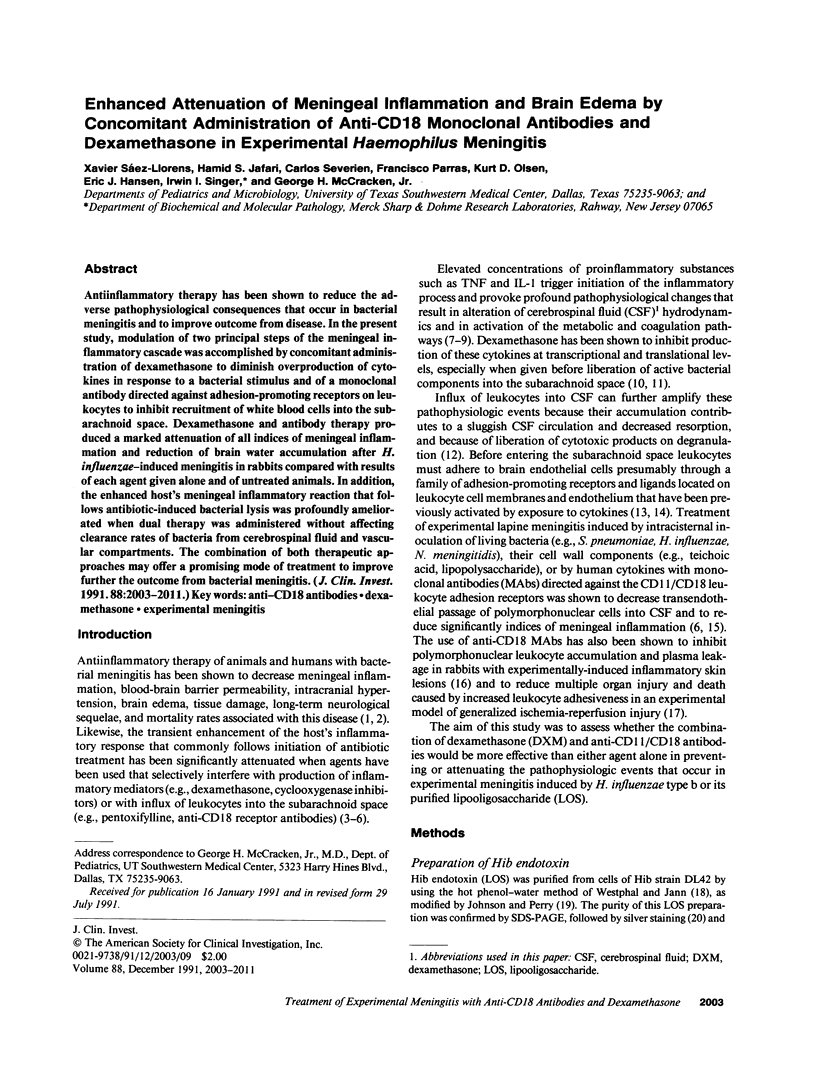
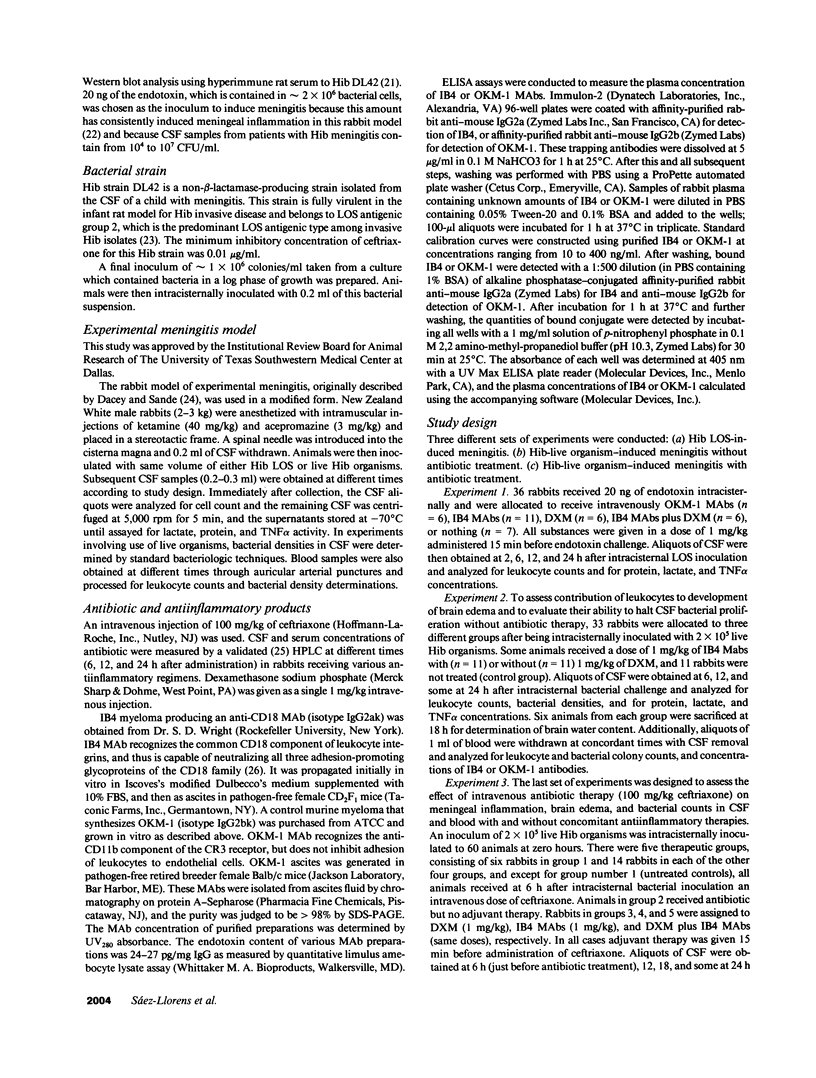
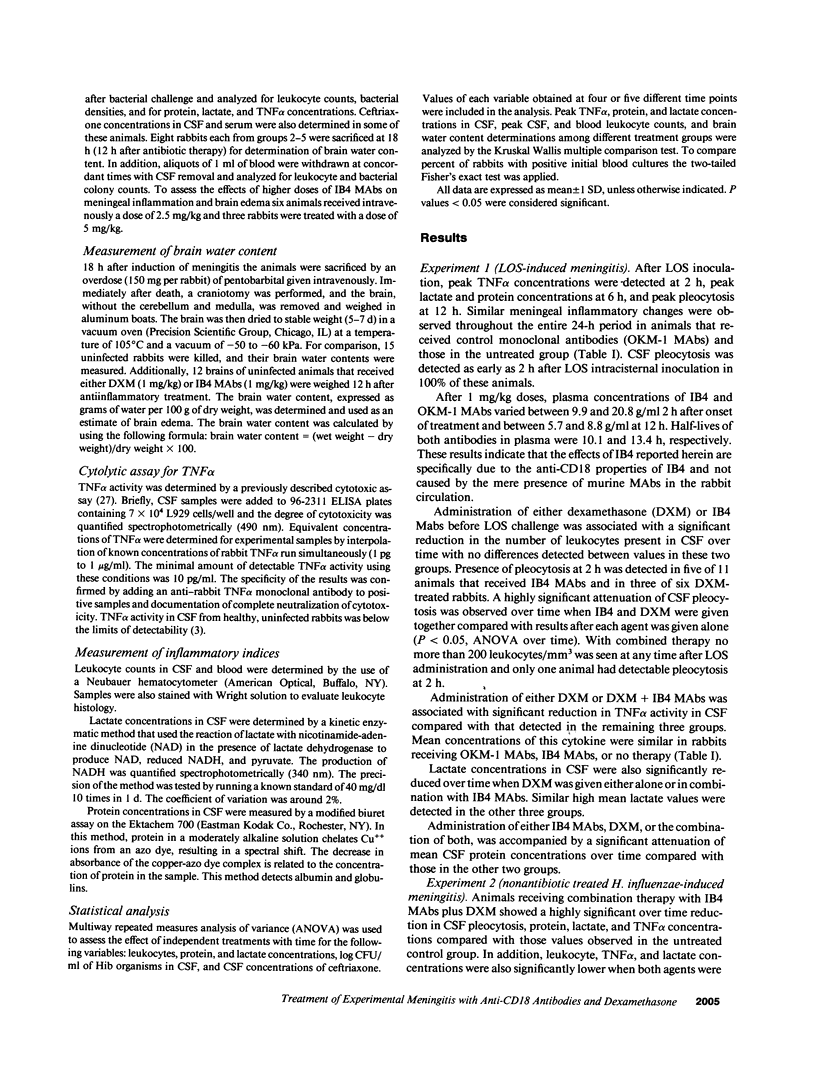
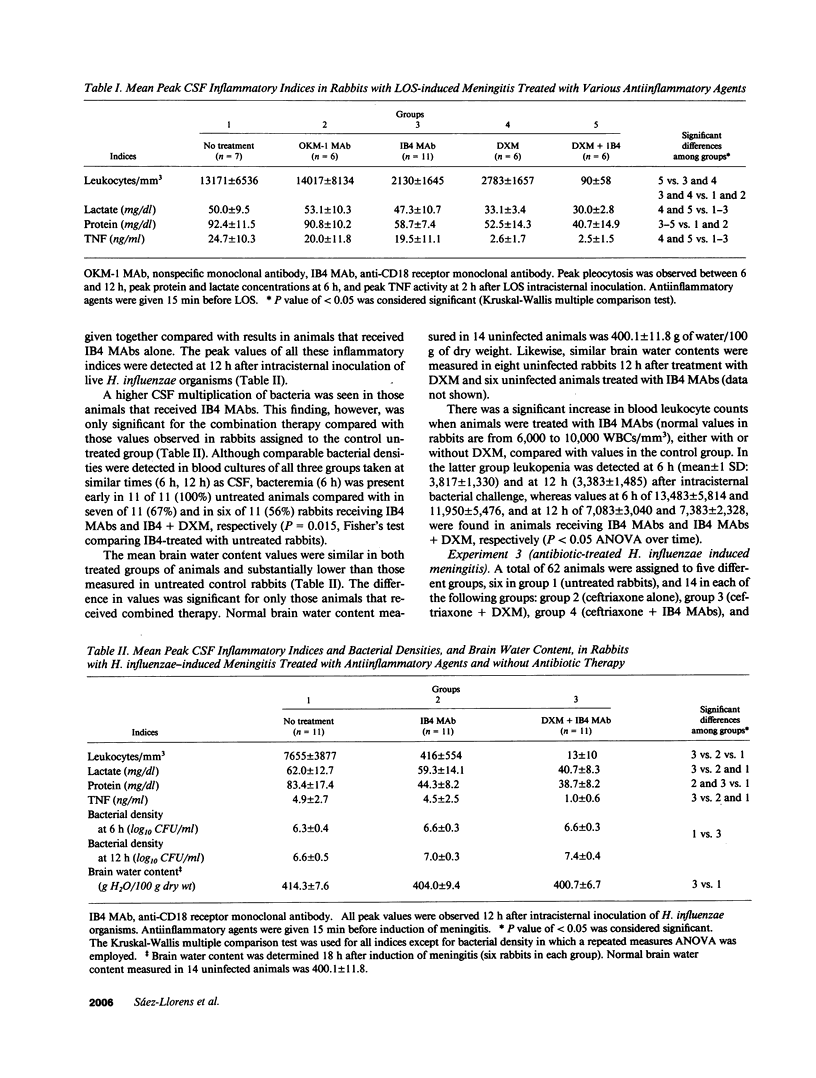
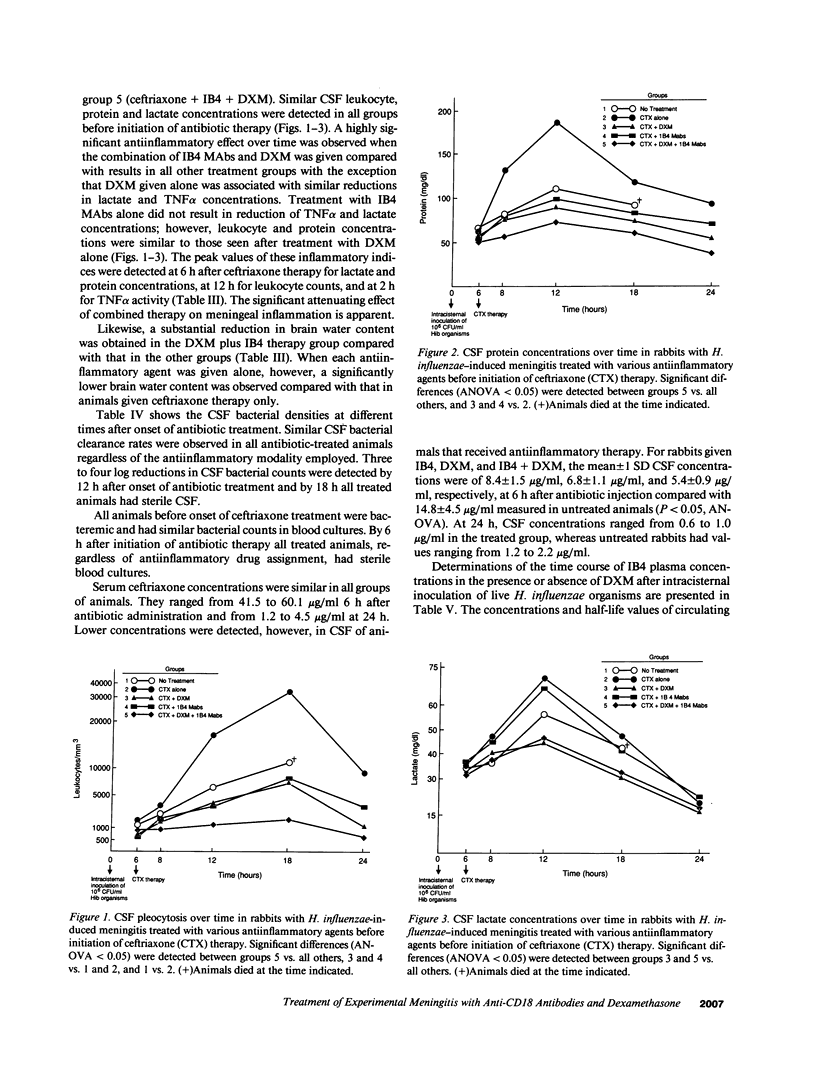
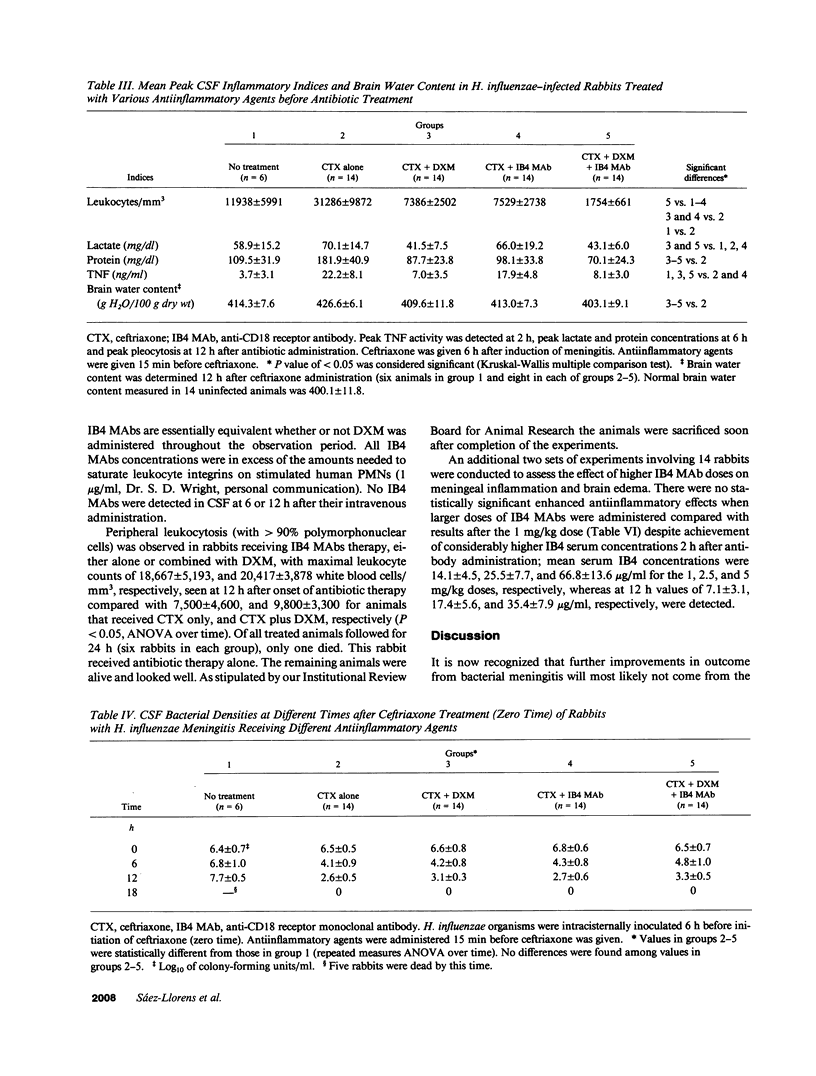
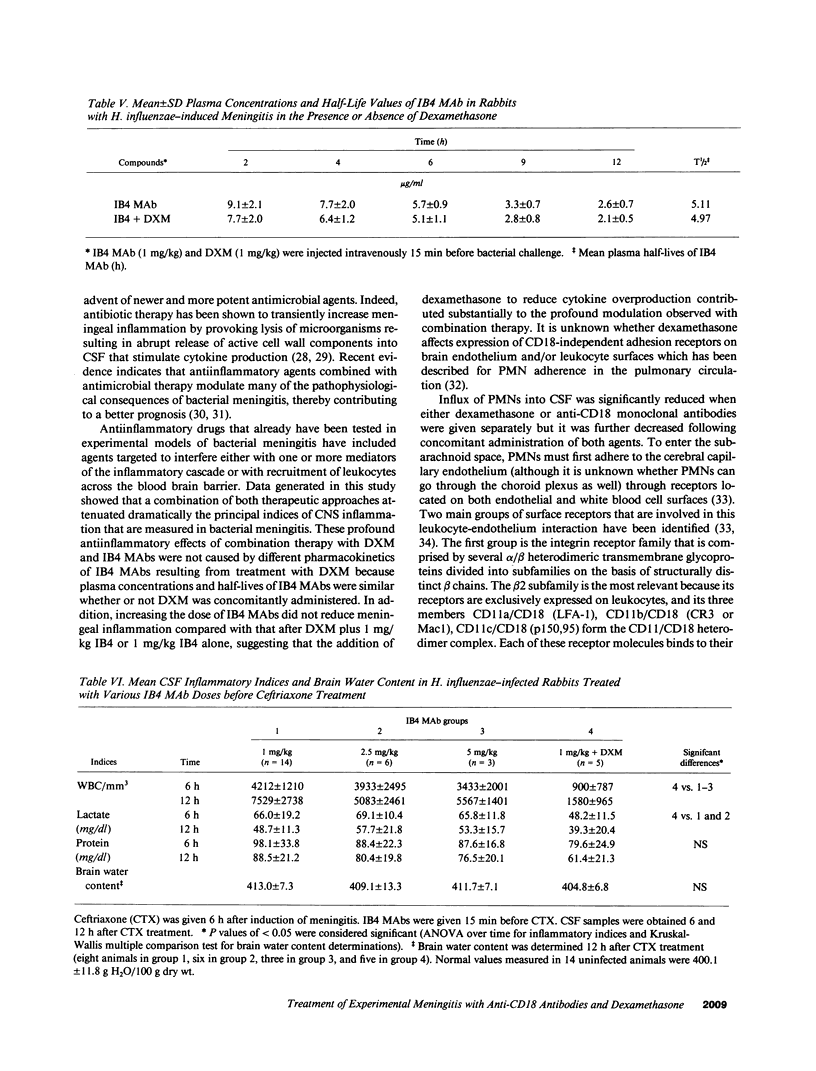
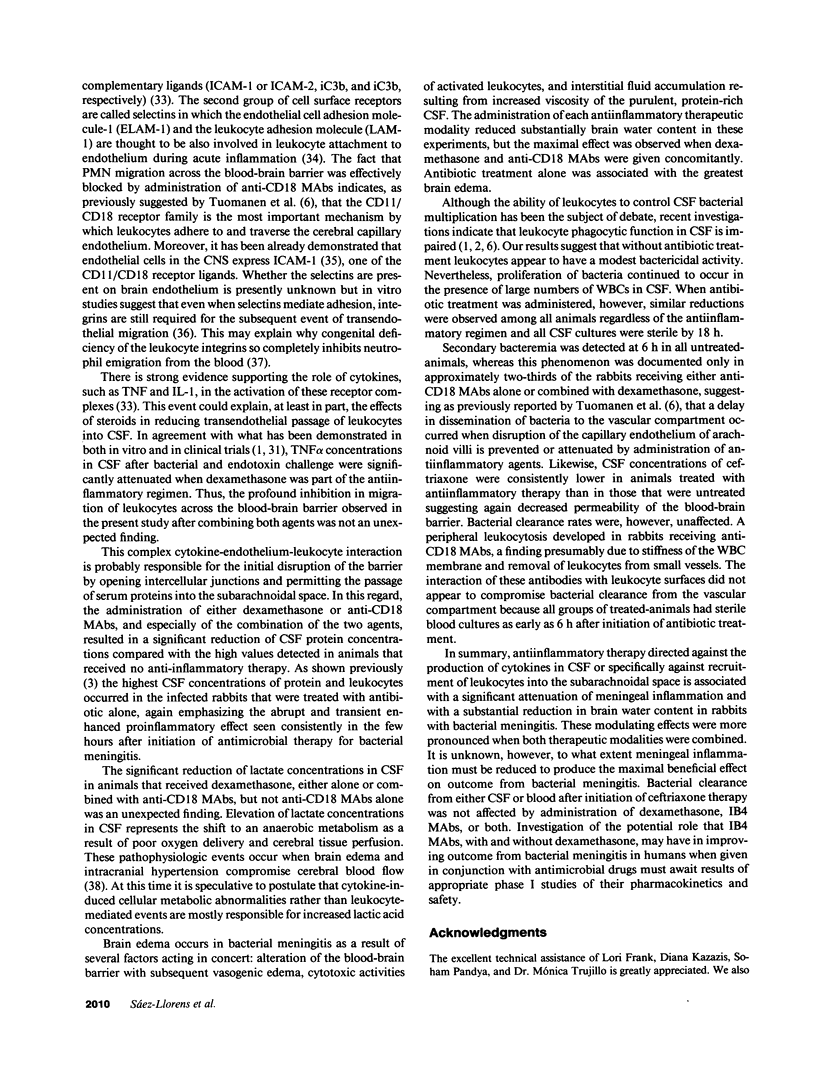
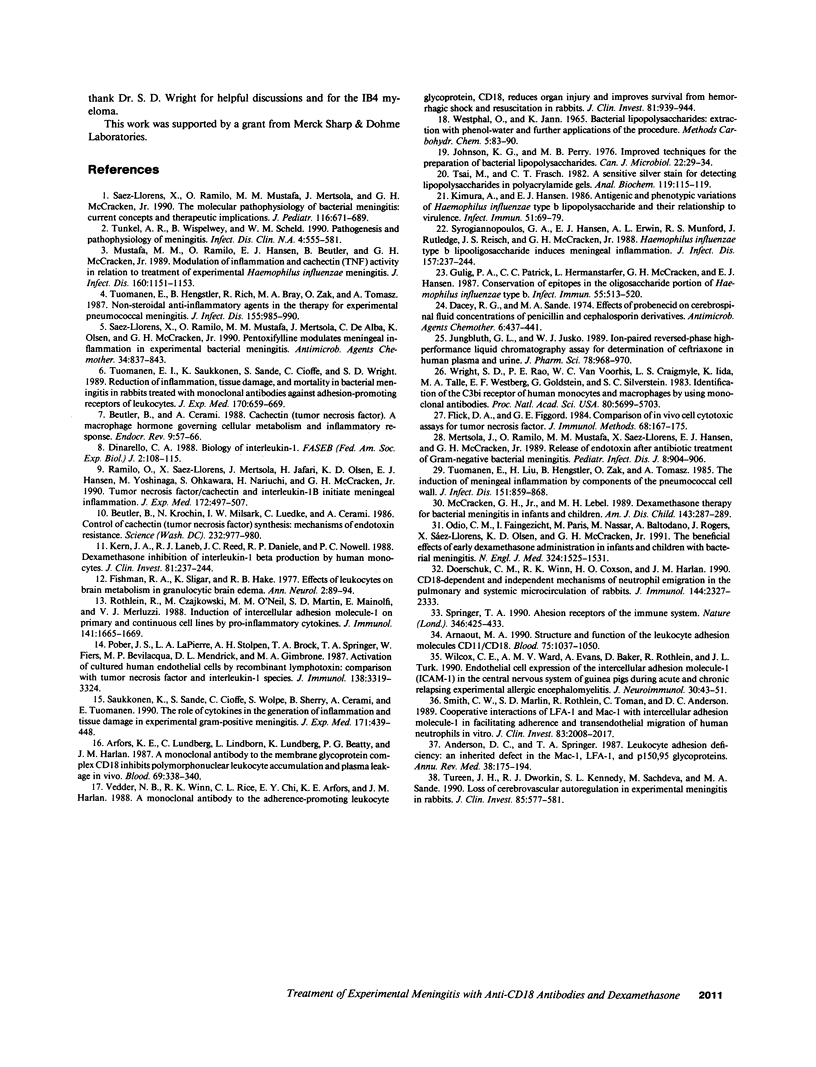
Selected References
These references are in PubMed. This may not be the complete list of references from this article.
- Anderson D. C., Springer T. A. Leukocyte adhesion deficiency: an inherited defect in the Mac-1, LFA-1, and p150,95 glycoproteins. Annu Rev Med. 1987;38:175–194. doi: 10.1146/annurev.me.38.020187.001135. [DOI] [PubMed] [Google Scholar]
- Arfors K. E., Lundberg C., Lindbom L., Lundberg K., Beatty P. G., Harlan J. M. A monoclonal antibody to the membrane glycoprotein complex CD18 inhibits polymorphonuclear leukocyte accumulation and plasma leakage in vivo. Blood. 1987 Jan;69(1):338–340. [PubMed] [Google Scholar]
- Arnaout M. A. Structure and function of the leukocyte adhesion molecules CD11/CD18. Blood. 1990 Mar 1;75(5):1037–1050. [PubMed] [Google Scholar]
- Beutler B., Cerami A. Cachectin (tumor necrosis factor): a macrophage hormone governing cellular metabolism and inflammatory response. Endocr Rev. 1988 Feb;9(1):57–66. doi: 10.1210/edrv-9-1-57. [DOI] [PubMed] [Google Scholar]
- Beutler B., Krochin N., Milsark I. W., Luedke C., Cerami A. Control of cachectin (tumor necrosis factor) synthesis: mechanisms of endotoxin resistance. Science. 1986 May 23;232(4753):977–980. doi: 10.1126/science.3754653. [DOI] [PubMed] [Google Scholar]
- Dacey R. G., Sande M. A. Effect of probenecid on cerebrospinal fluid concentrations of penicillin and cephalosporin derivatives. Antimicrob Agents Chemother. 1974 Oct;6(4):437–441. doi: 10.1128/aac.6.4.437. [DOI] [PMC free article] [PubMed] [Google Scholar]
- Dinarello C. A. Biology of interleukin 1. FASEB J. 1988 Feb;2(2):108–115. [PubMed] [Google Scholar]
- Doerschuk C. M., Winn R. K., Coxson H. O., Harlan J. M. CD18-dependent and -independent mechanisms of neutrophil emigration in the pulmonary and systemic microcirculation of rabbits. J Immunol. 1990 Mar 15;144(6):2327–2333. [PubMed] [Google Scholar]
- Flick D. A., Gifford G. E. Comparison of in vitro cell cytotoxic assays for tumor necrosis factor. J Immunol Methods. 1984 Mar 30;68(1-2):167–175. doi: 10.1016/0022-1759(84)90147-9. [DOI] [PubMed] [Google Scholar]
- Gulig P. A., Patrick C. C., Hermanstorfer L., McCracken G. H., Jr, Hansen E. J. Conservation of epitopes in the oligosaccharide portion of the lipooligosaccharide of Haemophilus influenzae type b. Infect Immun. 1987 Mar;55(3):513–520. doi: 10.1128/iai.55.3.513-520.1987. [DOI] [PMC free article] [PubMed] [Google Scholar]
- Johnson K. G., Perry M. B. Improved techniques for the preparation of bacterial lipopolysaccharides. Can J Microbiol. 1976 Jan;22(1):29–34. doi: 10.1139/m76-004. [DOI] [PubMed] [Google Scholar]
- Jungbluth G. L., Jusko W. J. Ion-paired reversed-phase high-performance liquid chromatography assay for determination of ceftriaxone in human plasma and urine. J Pharm Sci. 1989 Nov;78(11):968–970. doi: 10.1002/jps.2600781118. [DOI] [PubMed] [Google Scholar]
- Kern J. A., Lamb R. J., Reed J. C., Daniele R. P., Nowell P. C. Dexamethasone inhibition of interleukin 1 beta production by human monocytes. Posttranscriptional mechanisms. J Clin Invest. 1988 Jan;81(1):237–244. doi: 10.1172/JCI113301. [DOI] [PMC free article] [PubMed] [Google Scholar]
- Kimura A., Hansen E. J. Antigenic and phenotypic variations of Haemophilus influenzae type b lipopolysaccharide and their relationship to virulence. Infect Immun. 1986 Jan;51(1):69–79. doi: 10.1128/iai.51.1.69-79.1986. [DOI] [PMC free article] [PubMed] [Google Scholar]
- McCracken G. H., Jr, Lebel M. H. Dexamethasone therapy for bacterial meningitis in infants and children. Am J Dis Child. 1989 Mar;143(3):287–289. doi: 10.1001/archpedi.1989.02150150041013. [DOI] [PubMed] [Google Scholar]
- Mertsola J., Ramilo O., Mustafa M. M., Sáez-Llorens X., Hansen E. J., McCracken G. H., Jr Release of endotoxin after antibiotic treatment of Gram-negative bacterial meningitis. Pediatr Infect Dis J. 1989 Dec;8(12):904–906. doi: 10.1097/00006454-198912000-00036. [DOI] [PubMed] [Google Scholar]
- Odio C. M., Faingezicht I., Paris M., Nassar M., Baltodano A., Rogers J., Sáez-Llorens X., Olsen K. D., McCracken G. H., Jr The beneficial effects of early dexamethasone administration in infants and children with bacterial meningitis. N Engl J Med. 1991 May 30;324(22):1525–1531. doi: 10.1056/NEJM199105303242201. [DOI] [PubMed] [Google Scholar]
- Pober J. S., Lapierre L. A., Stolpen A. H., Brock T. A., Springer T. A., Fiers W., Bevilacqua M. P., Mendrick D. L., Gimbrone M. A., Jr Activation of cultured human endothelial cells by recombinant lymphotoxin: comparison with tumor necrosis factor and interleukin 1 species. J Immunol. 1987 May 15;138(10):3319–3324. [PubMed] [Google Scholar]
- Ramilo O., Sáez-Llorens X., Mertsola J., Jafari H., Olsen K. D., Hansen E. J., Yoshinaga M., Ohkawara S., Nariuchi H., McCracken G. H., Jr Tumor necrosis factor alpha/cachectin and interleukin 1 beta initiate meningeal inflammation. J Exp Med. 1990 Aug 1;172(2):497–507. doi: 10.1084/jem.172.2.497. [DOI] [PMC free article] [PubMed] [Google Scholar]
- Rothlein R., Czajkowski M., O'Neill M. M., Marlin S. D., Mainolfi E., Merluzzi V. J. Induction of intercellular adhesion molecule 1 on primary and continuous cell lines by pro-inflammatory cytokines. Regulation by pharmacologic agents and neutralizing antibodies. J Immunol. 1988 Sep 1;141(5):1665–1669. [PubMed] [Google Scholar]
- Saukkonen K., Sande S., Cioffe C., Wolpe S., Sherry B., Cerami A., Tuomanen E. The role of cytokines in the generation of inflammation and tissue damage in experimental gram-positive meningitis. J Exp Med. 1990 Feb 1;171(2):439–448. doi: 10.1084/jem.171.2.439. [DOI] [PMC free article] [PubMed] [Google Scholar]
- Smith C. W., Marlin S. D., Rothlein R., Toman C., Anderson D. C. Cooperative interactions of LFA-1 and Mac-1 with intercellular adhesion molecule-1 in facilitating adherence and transendothelial migration of human neutrophils in vitro. J Clin Invest. 1989 Jun;83(6):2008–2017. doi: 10.1172/JCI114111. [DOI] [PMC free article] [PubMed] [Google Scholar]
- Springer T. A. Adhesion receptors of the immune system. Nature. 1990 Aug 2;346(6283):425–434. doi: 10.1038/346425a0. [DOI] [PubMed] [Google Scholar]
- Syrogiannopoulos G. A., Hansen E. J., Erwin A. L., Munford R. S., Rutledge J., Reisch J. S., McCracken G. H., Jr Haemophilus influenzae type b lipooligosaccharide induces meningeal inflammation. J Infect Dis. 1988 Feb;157(2):237–244. doi: 10.1093/infdis/157.2.237. [DOI] [PubMed] [Google Scholar]
- Sáez-Llorens X., Ramilo O., Mustafa M. M., Mertsola J., McCracken G. H., Jr Molecular pathophysiology of bacterial meningitis: current concepts and therapeutic implications. J Pediatr. 1990 May;116(5):671–684. doi: 10.1016/s0022-3476(05)82647-2. [DOI] [PubMed] [Google Scholar]
- Sáez-Llorens X., Ramilo O., Mustafa M. M., Mertsola J., de Alba C., Hansen E., McCracken G. H., Jr Pentoxifylline modulates meningeal inflammation in experimental bacterial meningitis. Antimicrob Agents Chemother. 1990 May;34(5):837–843. doi: 10.1128/aac.34.5.837. [DOI] [PMC free article] [PubMed] [Google Scholar]
- Tsai C. M., Frasch C. E. A sensitive silver stain for detecting lipopolysaccharides in polyacrylamide gels. Anal Biochem. 1982 Jan 1;119(1):115–119. doi: 10.1016/0003-2697(82)90673-x. [DOI] [PubMed] [Google Scholar]
- Tunkel A. R., Wispelwey B., Scheld W. M. Pathogenesis and pathophysiology of meningitis. Infect Dis Clin North Am. 1990 Dec;4(4):555–581. [PubMed] [Google Scholar]
- Tuomanen E., Hengstler B., Rich R., Bray M. A., Zak O., Tomasz A. Nonsteroidal anti-inflammatory agents in the therapy for experimental pneumococcal meningitis. J Infect Dis. 1987 May;155(5):985–990. doi: 10.1093/infdis/155.5.985. [DOI] [PubMed] [Google Scholar]
- Tuomanen E., Liu H., Hengstler B., Zak O., Tomasz A. The induction of meningeal inflammation by components of the pneumococcal cell wall. J Infect Dis. 1985 May;151(5):859–868. doi: 10.1093/infdis/151.5.859. [DOI] [PubMed] [Google Scholar]
- Tureen J. H., Dworkin R. J., Kennedy S. L., Sachdeva M., Sande M. A. Loss of cerebrovascular autoregulation in experimental meningitis in rabbits. J Clin Invest. 1990 Feb;85(2):577–581. doi: 10.1172/JCI114475. [DOI] [PMC free article] [PubMed] [Google Scholar]
- Vedder N. B., Winn R. K., Rice C. L., Chi E. Y., Arfors K. E., Harlan J. M. A monoclonal antibody to the adherence-promoting leukocyte glycoprotein, CD18, reduces organ injury and improves survival from hemorrhagic shock and resuscitation in rabbits. J Clin Invest. 1988 Mar;81(3):939–944. doi: 10.1172/JCI113407. [DOI] [PMC free article] [PubMed] [Google Scholar]
- Wilcox C. E., Ward A. M., Evans A., Baker D., Rothlein R., Turk J. L. Endothelial cell expression of the intercellular adhesion molecule-1 (ICAM-1) in the central nervous system of guinea pigs during acute and chronic relapsing experimental allergic encephalomyelitis. J Neuroimmunol. 1990 Nov;30(1):43–51. doi: 10.1016/0165-5728(90)90051-n. [DOI] [PubMed] [Google Scholar]
- Wright S. D., Rao P. E., Van Voorhis W. C., Craigmyle L. S., Iida K., Talle M. A., Westberg E. F., Goldstein G., Silverstein S. C. Identification of the C3bi receptor of human monocytes and macrophages by using monoclonal antibodies. Proc Natl Acad Sci U S A. 1983 Sep;80(18):5699–5703. doi: 10.1073/pnas.80.18.5699. [DOI] [PMC free article] [PubMed] [Google Scholar]


